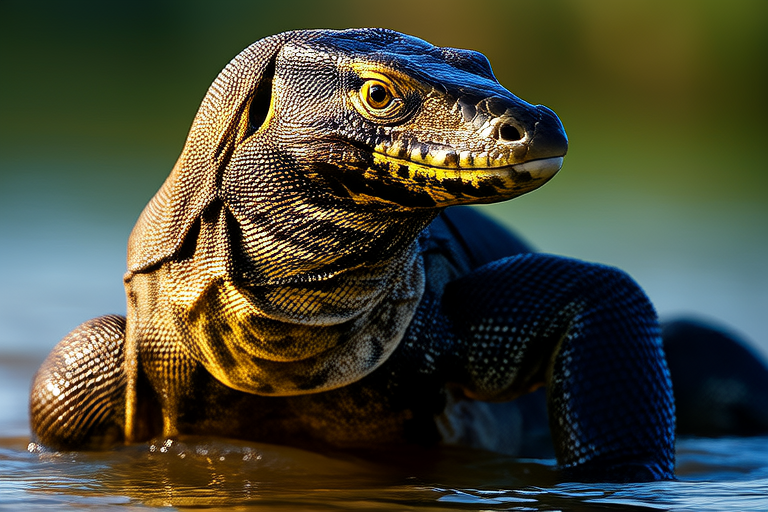Water Monitors Unleashed: A Deep Dive into Their Unique Needs
Introduction
Water monitors (Varanus salvator) are among the largest lizards in the world, known for their impressive size and remarkable adaptability. Native to Southeast Asia, these reptiles thrive in diverse environments ranging from dense rainforests to coastal mangroves. Water monitors are highly skilled swimmers, capable of diving deep into rivers and lakes, and they are also adept climbers, scaling trees with ease. Their natural behavior includes hunting for prey and exploring their surroundings, making them fascinating subjects for reptile enthusiasts.
Dietary Requirements
Understanding the dietary needs of water monitors is crucial for their well-being. In the wild, water monitors are opportunistic feeders, consuming a wide range of prey items such as fish, amphibians, small mammals, birds, and even carrion. Captive water monitors should be provided with a similarly varied diet to ensure they receive all necessary nutrients. A balanced diet might include rodents, feeder fish, insects, and occasional eggs or bird meat. The frequency of feeding depends on the age and size of the monitor; younger, growing monitors may require daily meals, while adult monitors can be fed every two to three days.
The quantity of food offered should be proportional to the lizard’s size and activity level. Overfeeding can lead to obesity and related health issues, so it’s important to monitor your monitor’s body condition. Additionally, supplements like calcium and vitamins are essential to prevent nutritional deficiencies.
Housing Needs
Creating an appropriate living environment for water monitors is vital. These reptiles need spacious enclosures that mimic their natural habitats as closely as possible. A minimum tank size of 8 feet long, 4 feet wide, and 6 feet high is recommended for an adult water monitor. This space allows for ample swimming and climbing opportunities, which are crucial for their physical and mental health.
Temperature and humidity levels must be carefully controlled. Water monitors prefer a temperature gradient within their enclosure, with basking spots reaching up to 95°F (35°C) and cooler areas around 75°F (24°C). Humidity should be maintained at about 60-80% to simulate their humid tropical environment. Proper ventilation is also necessary to prevent stagnant air and promote healthy respiration.
Lighting is another critical aspect of their care. UVB lighting is essential for vitamin D synthesis and overall health. Full-spectrum bulbs should be provided for 10-12 hours per day. Regularly cleaning the enclosure is equally important to maintain hygiene and prevent the buildup of harmful bacteria.
Social Interactions and Health Issues
Water monitors are generally solitary animals in the wild, but they can interact with humans in captivity if handled properly. However, they can become aggressive if they feel threatened or are mishandled. It’s important to establish trust and respect through consistent, gentle handling.
Potential health issues include respiratory infections, parasites, and metabolic bone disease. Regular veterinary check-ups are advised to catch and treat any problems early. Signs of illness might include lethargy, loss of appetite, or unusual behavior. Prompt action is necessary to address these concerns effectively.
Tips for Responsible Ownership
Owning a water monitor requires significant commitment. These animals have complex needs and a long lifespan, often exceeding 15 years. Potential owners should thoroughly research and prepare before acquiring one. Ensuring that you have the proper resources, knowledge, and commitment is key to providing the best care.
Joining local reptile groups or forums can provide valuable support and advice. Sharing experiences and learning from others who have successfully cared for water monitors can greatly enhance your ability to meet their needs.
In conclusion, water monitors are captivating and challenging pets that demand a dedicated owner. By understanding their unique requirements and dedicating time and effort to their care, you can ensure a fulfilling and rewarding relationship with these remarkable reptiles. Remember, responsible ownership means being prepared for the long-term commitment and the specialized care these animals need.
